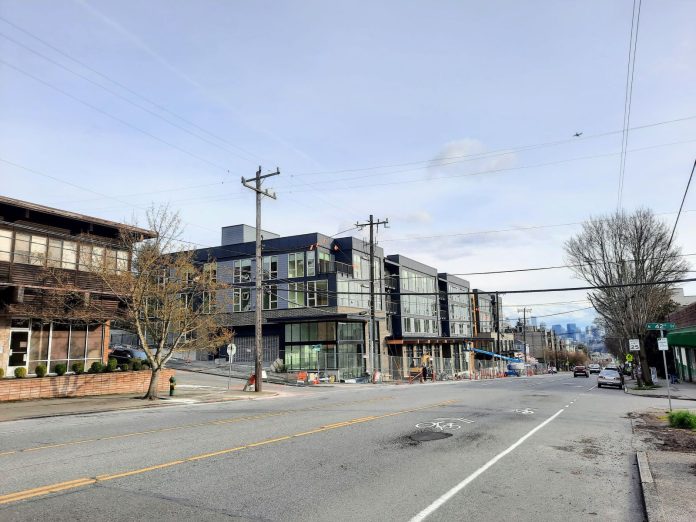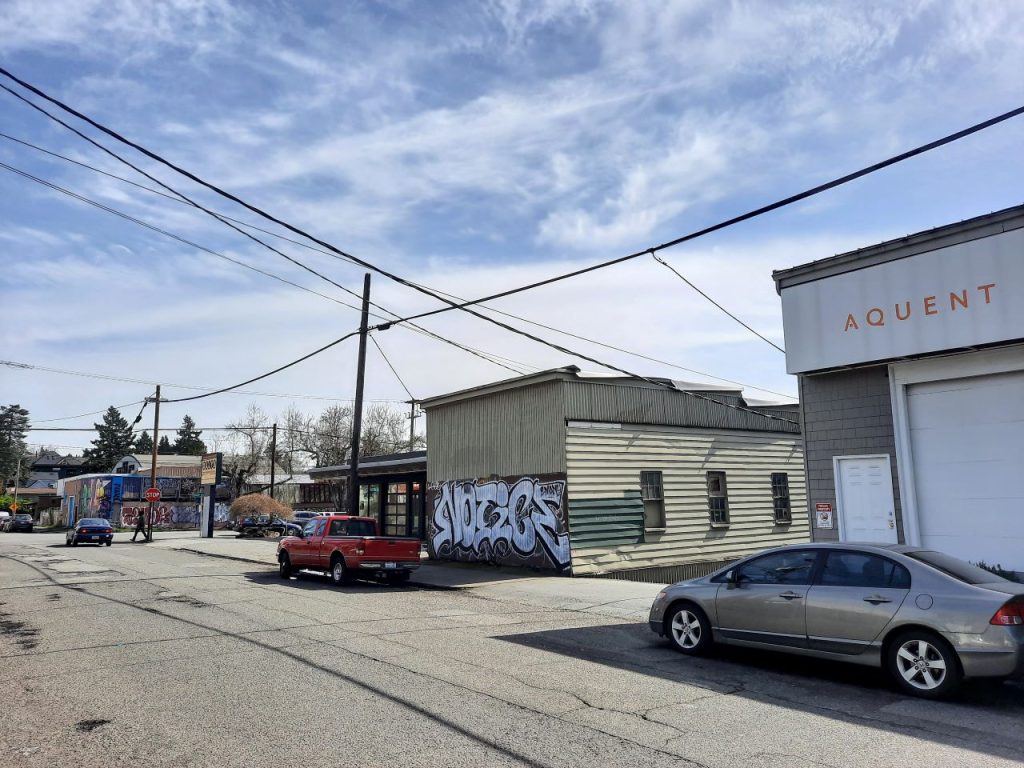The transformation of Stone Way, the arterial street delineating the official border between Fremont and Wallingford, continues with another spate of projects. One of the biggest projects of this new phase of development broke ground earlier this month. The Stoneway Electric warehouse has been demolished, an underground 76-stall parking garage will soon be excavated, and an eight-story building will then rise, bringing 243 homes and retail space to the bustling mixed-use district.
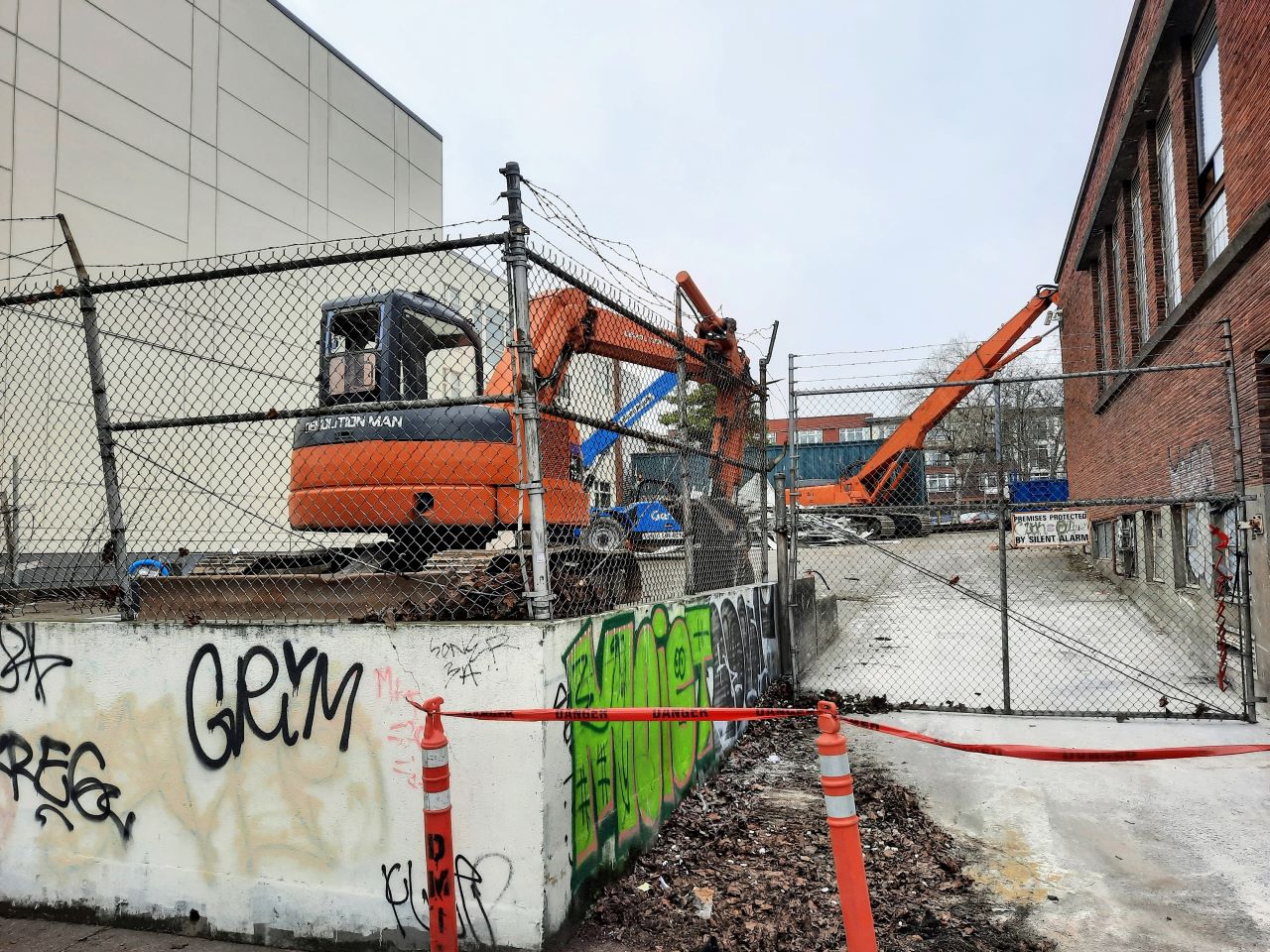
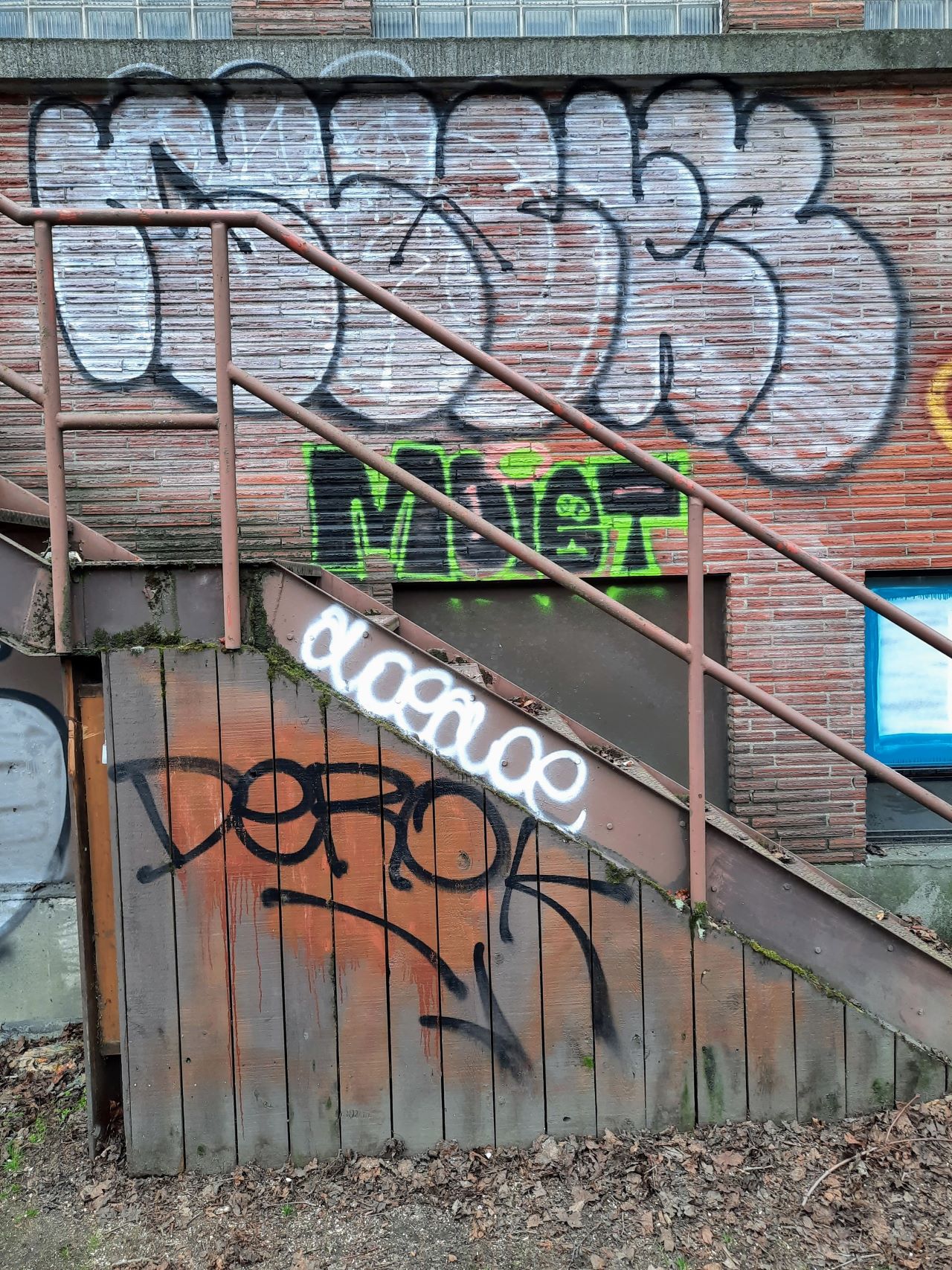
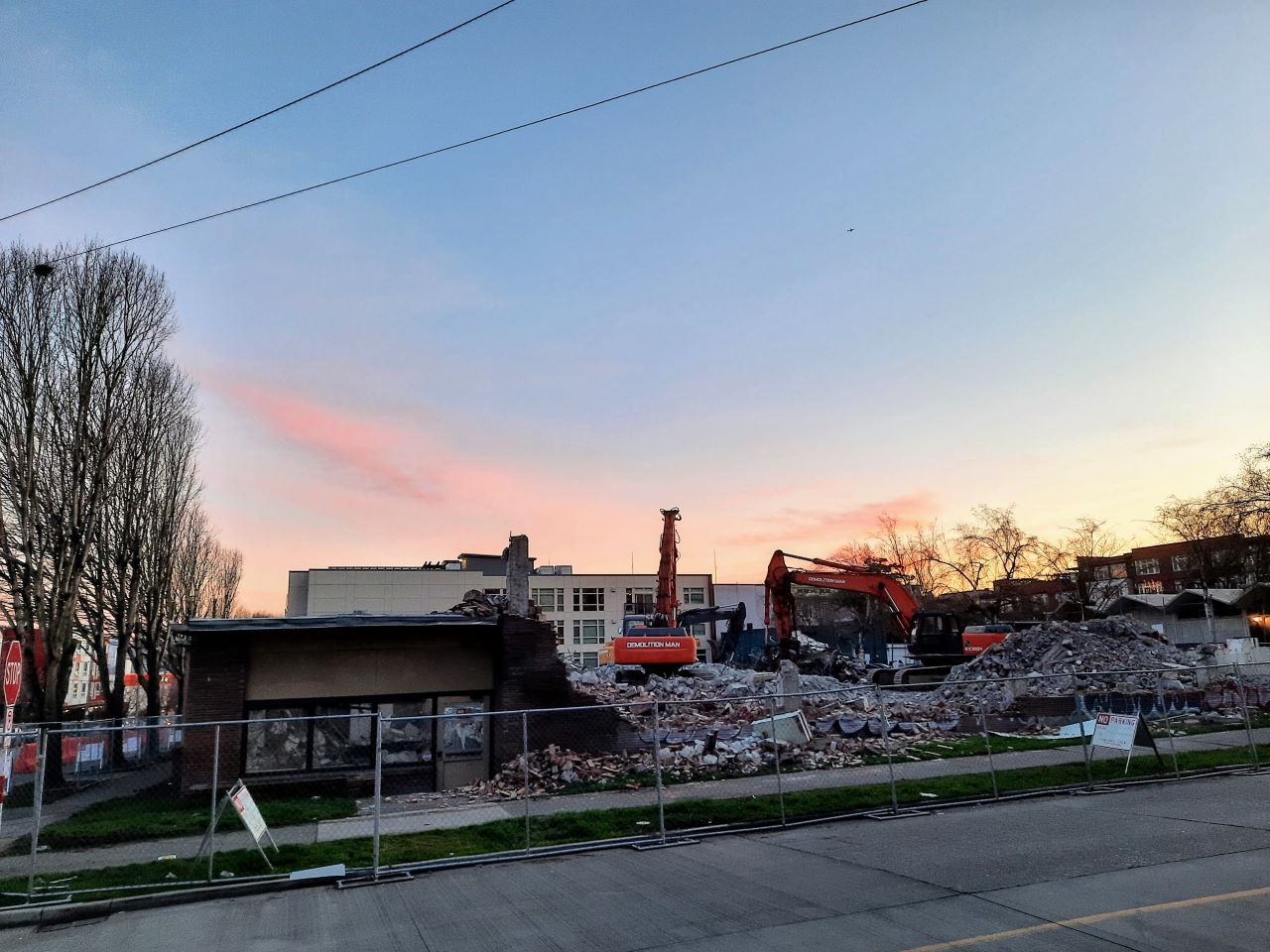
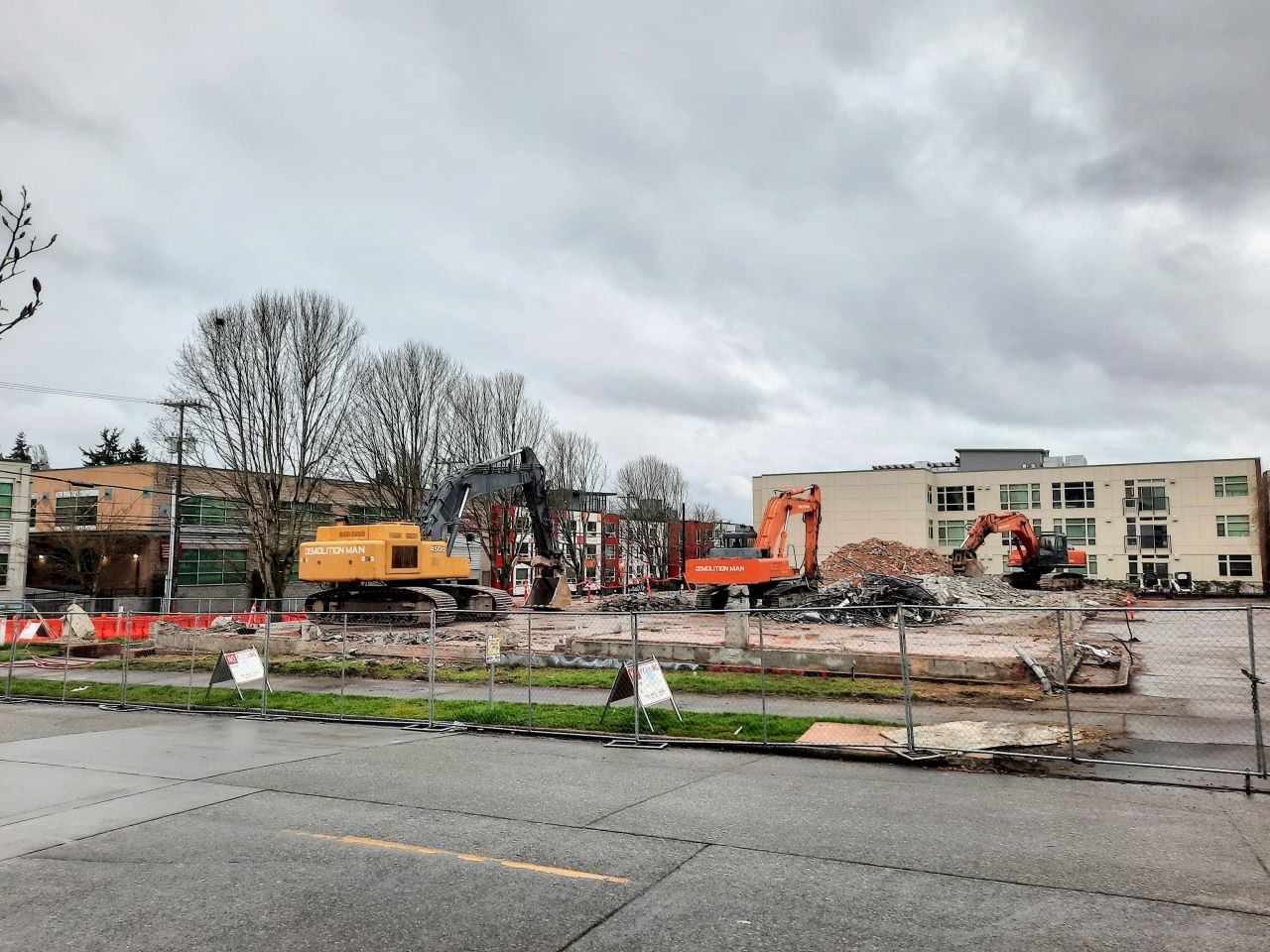
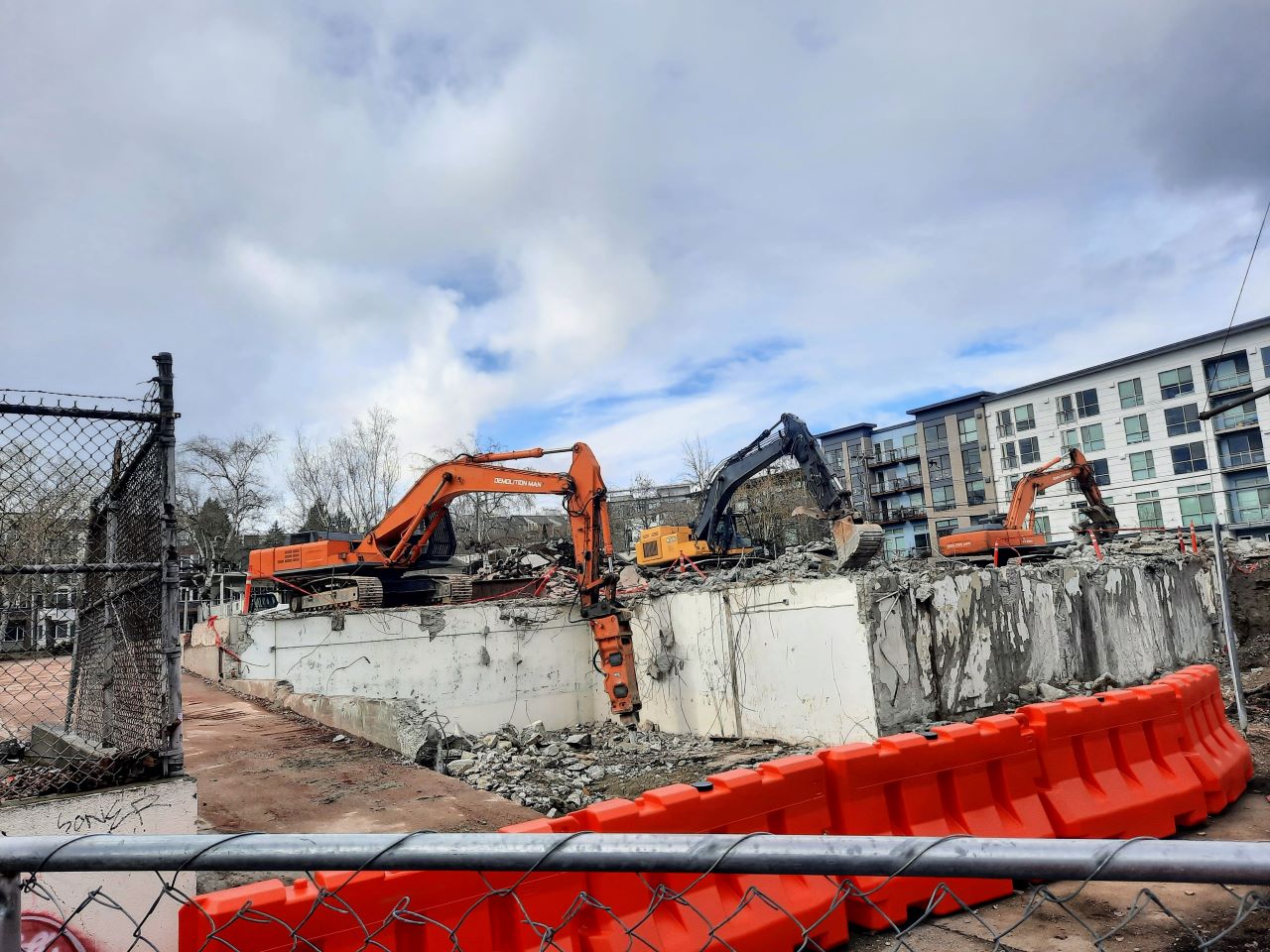
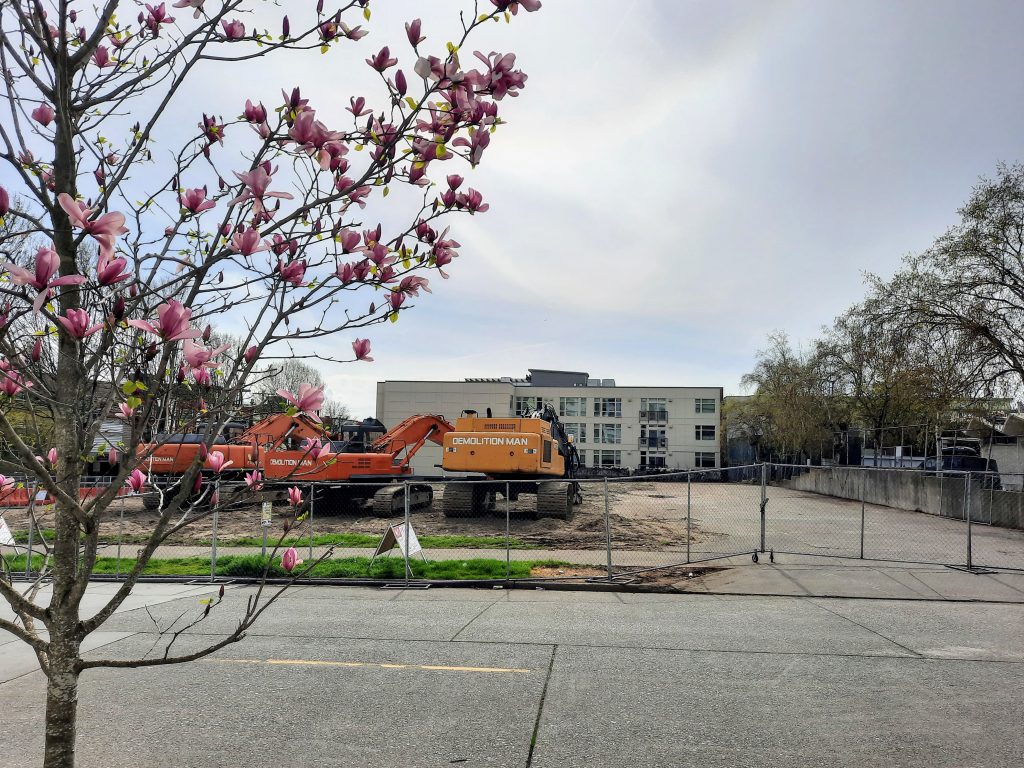
Farther north, 118 homes are nearing completion with the “Broadstone Vin” project at 4106 Stone Way N. While not quite as close to leasing, 4035 Stone Way N is starting to look like an apartment building and will soon deliver 49 homes. Another 42-apartment building has topped out at 4452 Stone Way N, which is across the street from Tutta Bella pizzeria. In all, that’s 209 apartments set to open along Stone Way by the end of the year, and it builds on strong production in recent years.
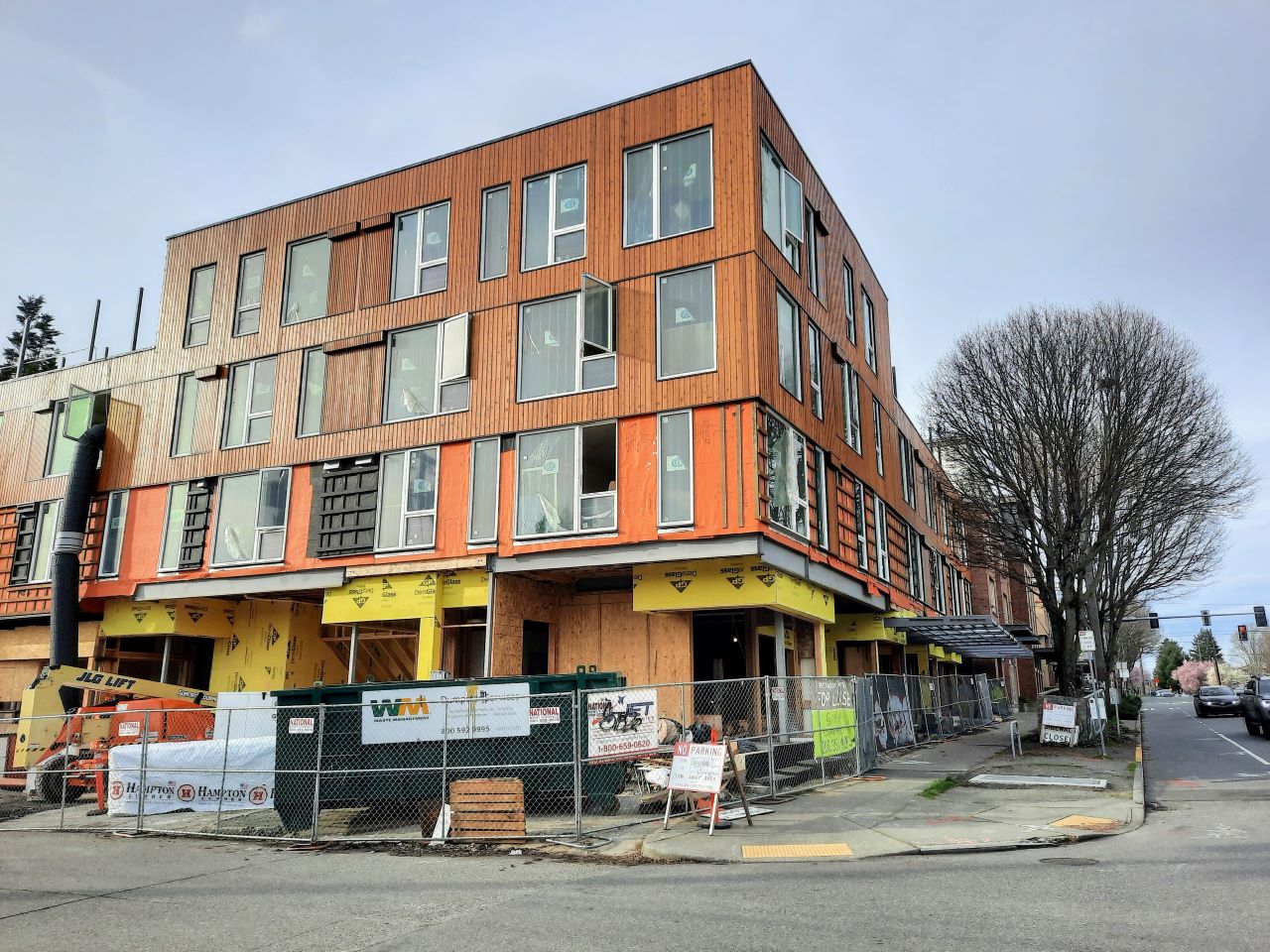
More than 2,000 new apartments have been delivered along Stone Way in the last decade. In its housing growth report, the Office of Planning and Community Development tallies just shy of 800 new units added in the Wallingford Urban Village from 2006 to 2021. Meanwhile, the Fremont Urban Village has built 1,505 new units since 2006. The majority of growth for these two neighborhoods is happening near Stone Way. By way of comparison, the Ballard Hub Urban Village has seen about 5,300 new homes since 2006.
On the flip side, the neighborhood also lost an apartment building to a fire amidst this boom. The damage to The Audrey appears extensive and it seems quite possible they’ll demolish the 116-year-old building and build anew. Thankfully no one was killed or injured in the fire in the early morning of February 25th. Unfortunately, the landlord appears to have handled the situation terribly, communicated poorly with tenants, failed to secure their residences from looters, and tried to pressure them into signing away their rights, as The Stranger reported.
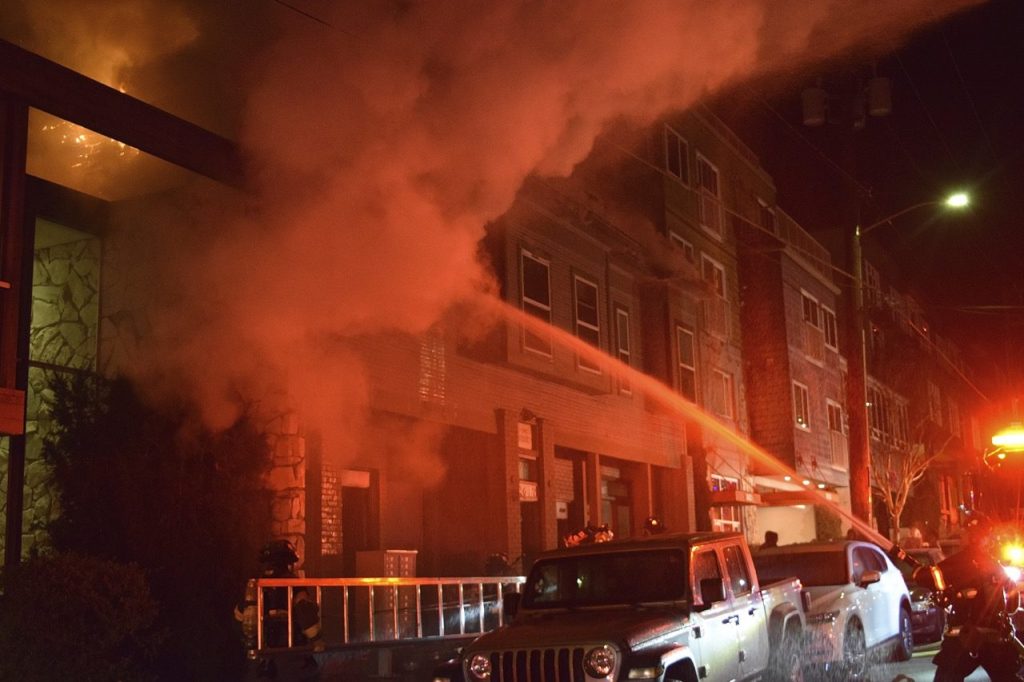
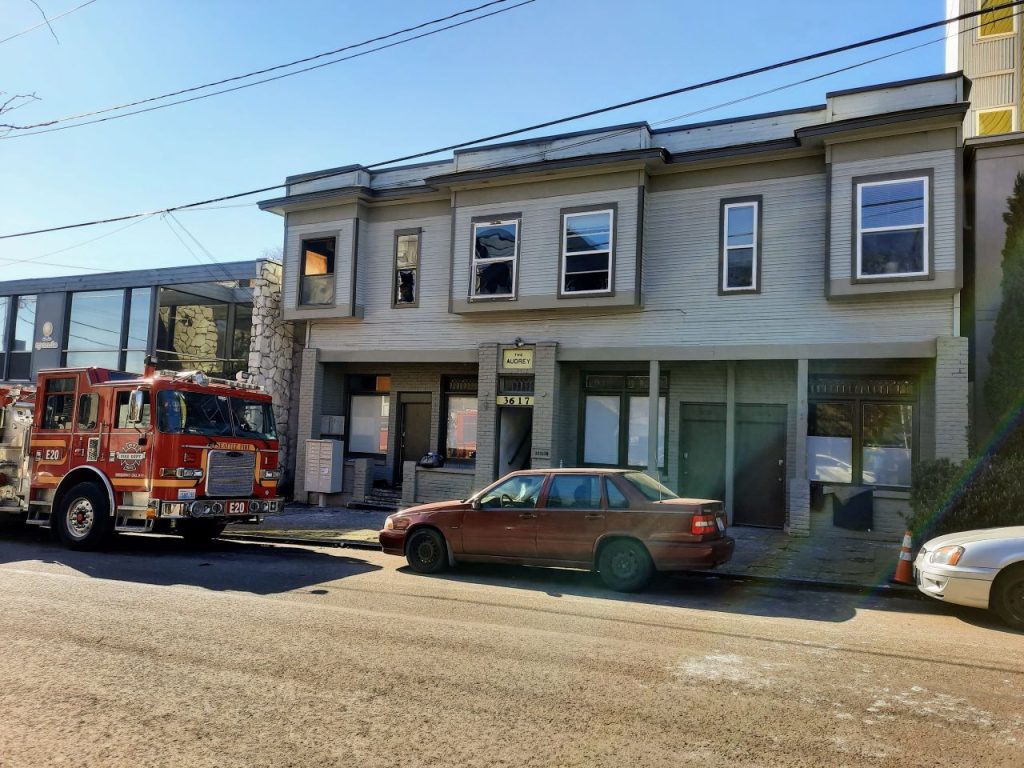
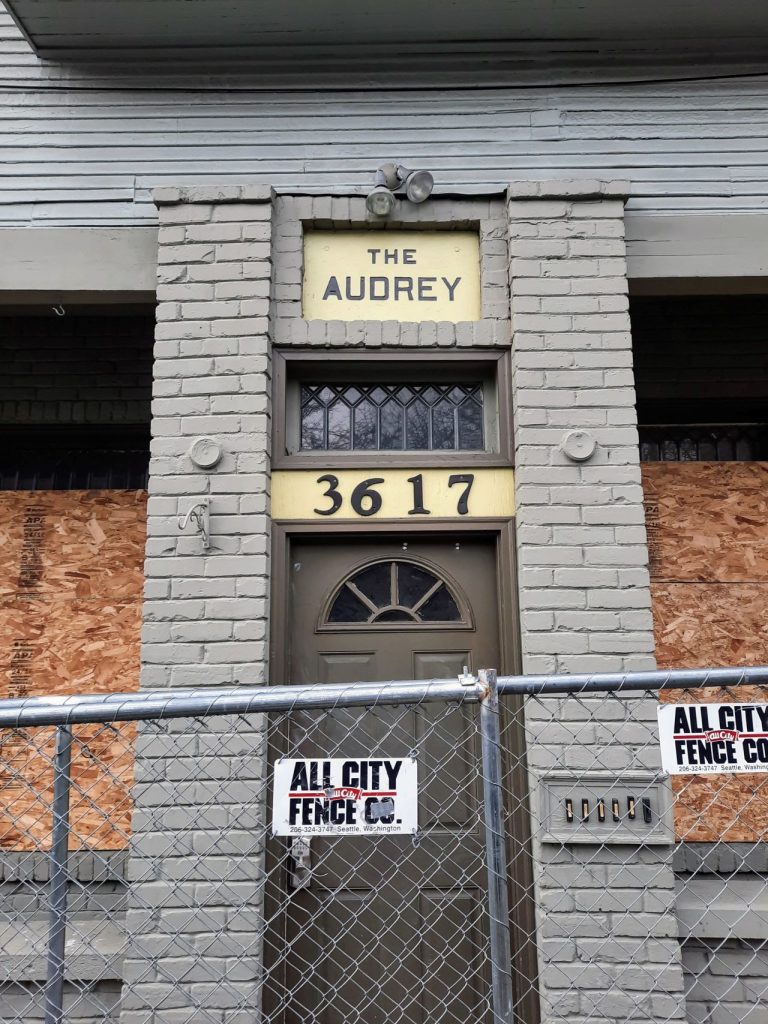
The Stone Way boom isn’t showing signs of letting up. New projects are entering the pipeline or approaching groundbreaking.
In summer 2021, a developer submitted a site plan and pre-application materials to convert the Stoneway Hardware at 4318 Stone Way N to a six-story apartment building with 130 homes and ground-floor retail. Hybrid Architecture is designing the building and will need to clear design review to get a Master Use Permit and then move on to a building permit. But the project could break ground late next year if they make their way through the process “quickly” for Seattle.
A five-story building is in pre-design steps at the northwest corner of Bridge Way and Stone Way, where a strip mall and 7-Eleven gas station currently stand — copious curb cuts and parking at a busy intersection has hardly been ideal for pedestrians in the area. With 50,000 square feet of development proposed, it’d likely include first-floor retail and about 50 apartments, depending on the unit mix.
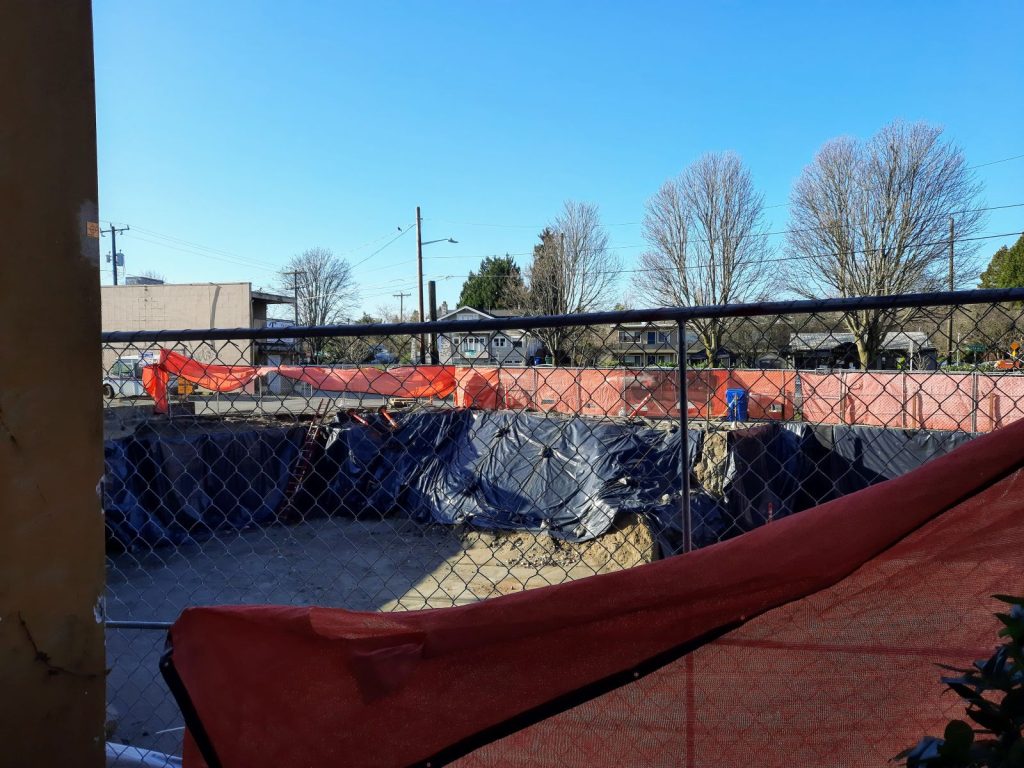
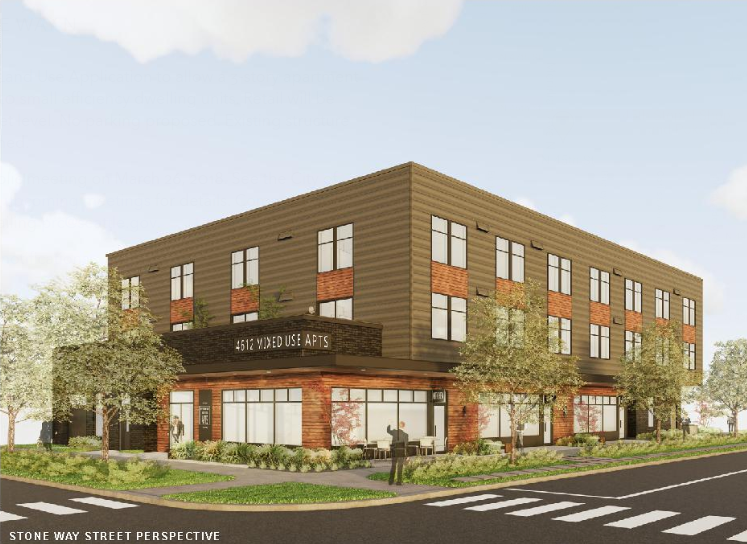
The 96 apartments planned at 4201 Stone Way N also will be moving forward shortly. The developer secured its construction permit on February 17th. There’s also signs of construction progress on the building with 43 small efficiencies next to the Wallingford Post Office. The site had been excavated but was put on pause during the pandemic. Construction workers are back on the site now, however, suggesting it’s going ahead. Ditto 19 apartments planned, but long delayed, at 3860 Bridge Way; workers are again at work and the project appears no longer on hiatus.
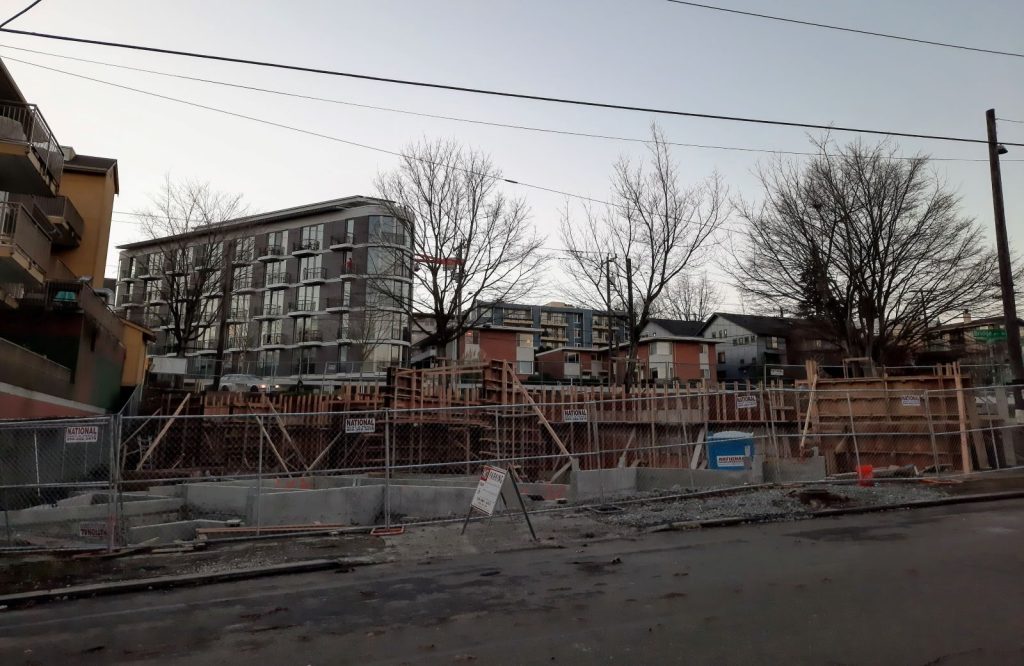
Meanwhile, just north of Fremont Brewing on Woodland Park Avenue, an eight-story building with 122 homes appears to be just waiting for the right time (and perhaps financing) to begin construction. In August 2021, the project received a demolition permit for the rundown single family house on the lot. But after demolishing it recently, construction still hasn’t commenced. The building will contain four live-work units, 50 small efficiency dwelling units, 68 apartments, and parking for 10 vehicles. The Seattle City Council granted the project a contract rezone in 2019, which boosted the site to Neighborhood Commercial zoning with a 75-foot height limit. It had been 40-foot Commercial previously.
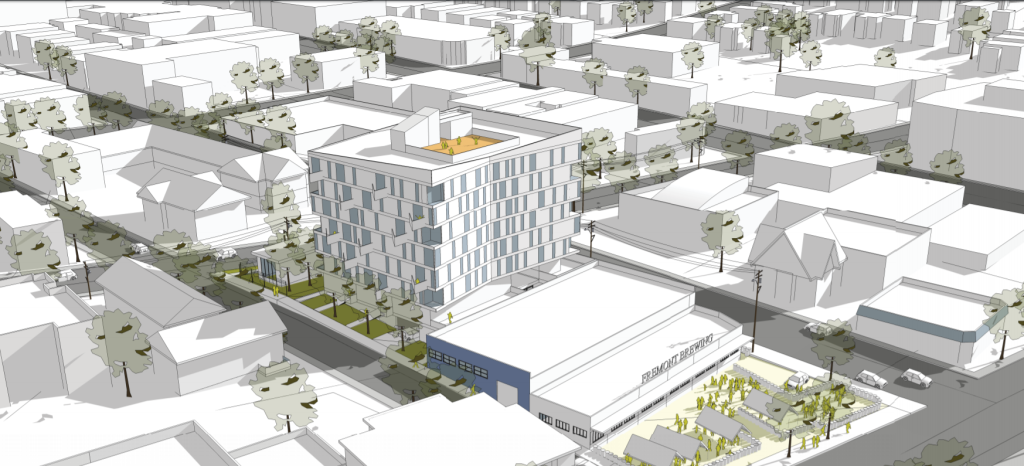
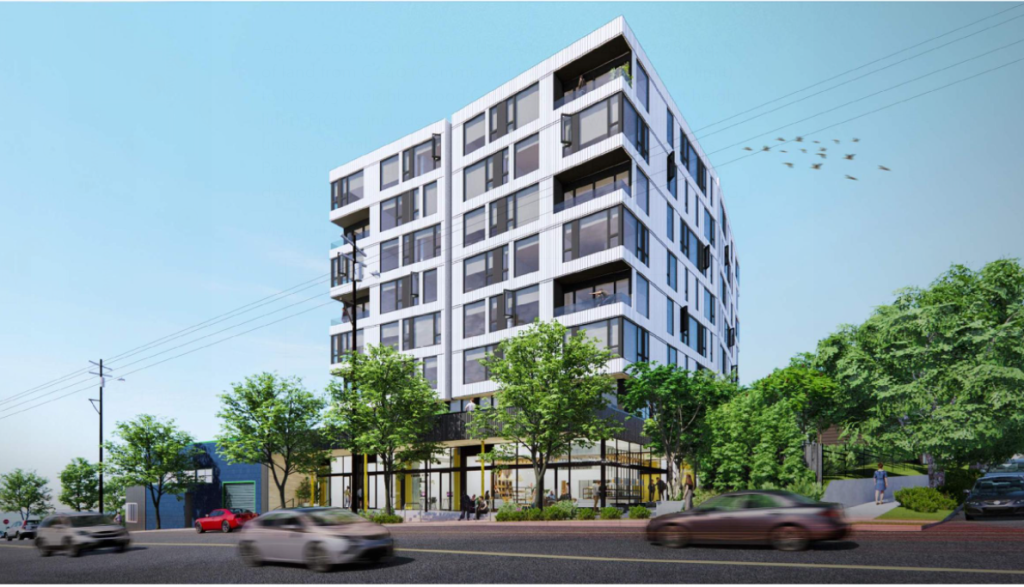
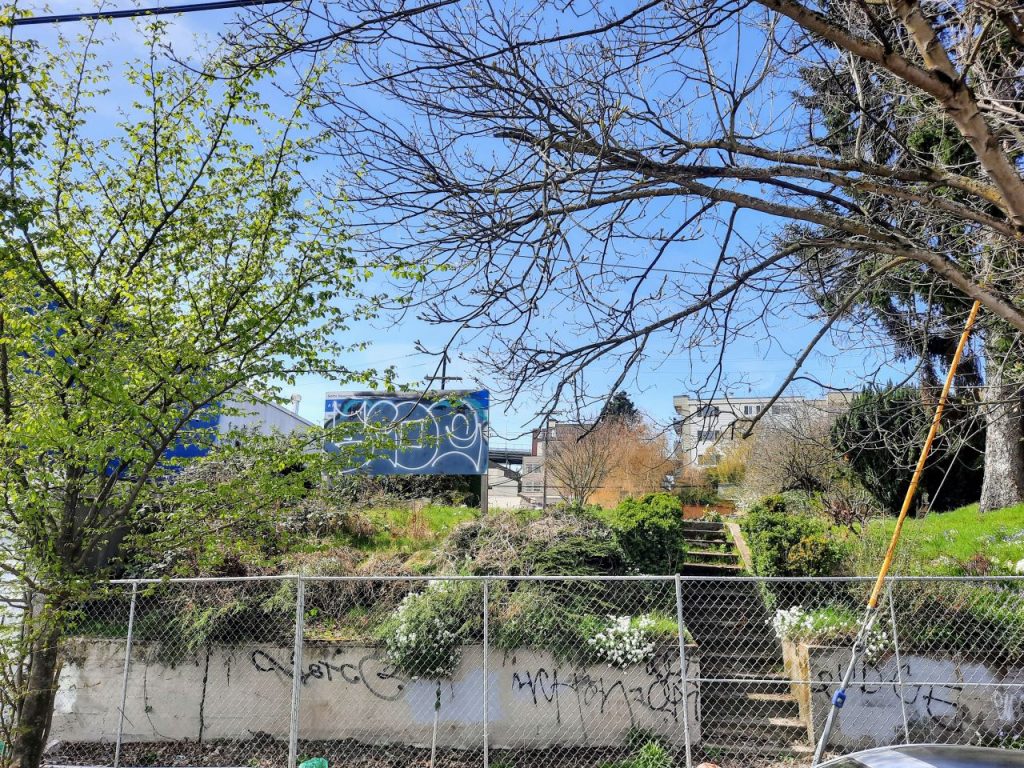
Unlike some other neighborhoods in Seattle, the growth along Stone Way is not driven by light rail access. Planned rapid transit expansions will not reach Fremont or Wallingford, as Sound Transit preferred to prioritize beelining for I-5 park and rides and hooking toward Paine Field — a fledgling airport. But Stone Way does have Route 62, a bus in Metro’s high-frequency network. Before the pandemic, it was tough to rely on the 62 during peak hours, but the route has gotten a bit more reliable as Downtown traffic has lessened. That said, with many major employers planning a return to the office, the honeymoon could be drawing to an end. The couplet of Route 31 and 32 provides service to the University of Washington campus and to the newly opened U District light rail station, but the duo’s frequency and reliability leaves some to be desired.
A smattering of sites conducive to mid-rise redevelopment remain along Stone Way.
A proposal for a 8-story apartment building with 140 homes just north of The Bowman continues to snake its way through the design review and permitting process. The Bowman added more 278 apartments in 2015 in a five-story complex, as the largest single residential project in the neighborhood thus far.
There are sites that could surpass that if assembled together and used their full potential zoned capacity under the Mandatory Housing Affordability rezones. But nothing that’s completely low-hanging fruit remains.
South of 36th Street, Industrial Commercial zoning takes over, which limits housing opportunities at the southern end of Stone Way. It also could explain the lack of new development on the superblock south of 36th Street, which contains a former Daly’s home decoration store undergoing renovation and a few one-story retail fronts on the Stone Way side and an Aquent building and a brake supply warehouse on the Woodland Park Avenue side. If it had 75-foot Neighborhood Commercial zoning like the block to its north, the superblock could host upwards of 400 homes. But, for now, it doesn’t.
A planned reform of citywide industrial land use policy, could perhaps offer some flexibility. Residential parts of the neighborhood could also see changes. Most of Stone Way is getting build up, which suggests more of the surrounding blocks should have zoning similar to this bustling corridor.
I mapped out recent and pending projects along Stone Way below. The dark grey shapes are buildings completed since 2012. Orange polygons denote projects under construction, and yellow ones are proposals in design review or are awaiting construction permits.
The reason behind the Stone Way boom
Despite a lack of light rail access, the Stone Way corridor has other factors going for it. It’s close to the University of Washington, it has great parks, good walkability, Burke-Gilman Trail access, offers a relatively short bike or bus ride to Downtown, and, perhaps most crucially, it’s zoned for growth. Much of zoning in the rest of Fremont and Wallingford is more anemic, with the neighborhoods funneling their high-capacity zoning toward Stone Way to hit their capacity quotas, but keeping zoning stingier along their older business districts and largely single-family areas.
The silver lining is that Stone Way has developed into a vibrant business district in its own right, with lots of new restaurants, cafes, and stores going in and taking advantage of the big uptick in foot traffic. The continuing growth is likely to continue this pattern.
At a glance
- 3421 WOODLAND PARK AVE N – 122 apartments, 10 parking stalls
- 3524 STONE WAY N – 100,000 square feet office space, 148 parking stalls
- 3665 STONE WAY N – 243 apartments, eight stories, 77 parking stalls
- 3831 STONE WAY N – 145 apartments, eight stories, 75 parking stalls
- 3320 CLAREMONT AVE S – 35 apartments, no parking
- 4035 STONE WAY N – 49 apartments, 33 parking stalls
- 4106 STONE WAY N – 118 apartments, 59 parking stalls
- 4201 STONE WAY N – 95 apartments, 22 parking stalls (formerly 4201 STONE WAY N – 51 apartments, 4 parking spots)
- 4318 STONE WAY N – 130 apartments
- 4453 STONE WAY N – 42 apartments, 15 parking stalls
- 4612 STONE WAY N – 40 small efficiency apartments, 0 parking
- 909 N 39TH ST – 153 apartments, 58 parking stalls. (This is an affordable housing project)
- 3926 AURORA AVE N – 120 hotel rooms, 121 parking stalls
Doug Trumm is publisher of The Urbanist. An Urbanist writer since 2015, he dreams of pedestrian streets, bus lanes, and a mass-timber building spree to end our housing crisis. He graduated from the Evans School of Public Policy and Governance at the University of Washington in 2019. He lives in Seattle's Fremont neighborhood and loves to explore the city by foot and by bike.

